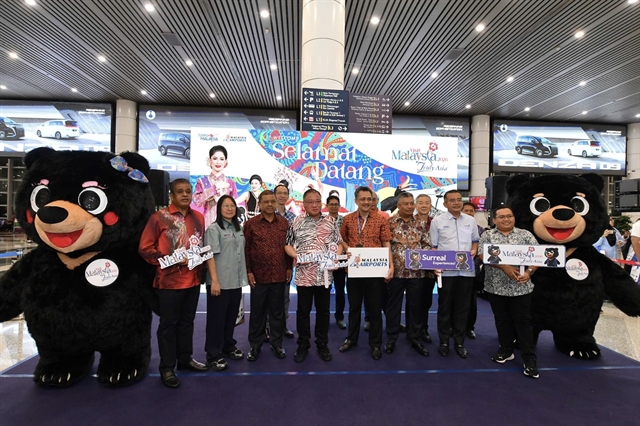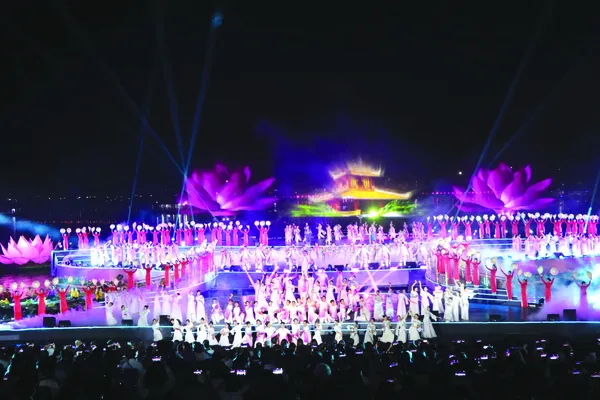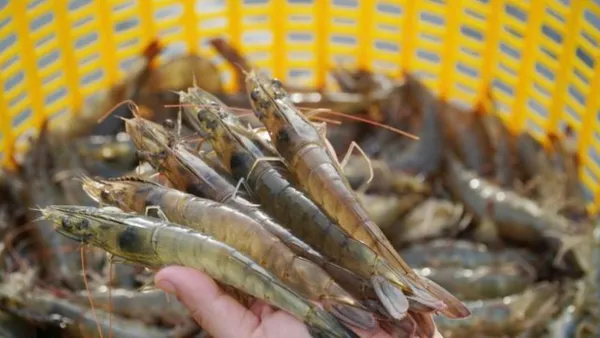 Life & Style
Life & Style

M’Nông villagers carry out their annual ceremony at a house they built in a special village designed for all 54 ethnic groups in the country called the Culture, Tourism Village of Vietnamese Ethnic Groups, located in the western outskirts of Hà Nội.
 |
| Rallying call: K’Mang, head of a M’Nông ethnic group village from the Central Highlands province of Đắk Nông, blows a long breath into a buffalo horn to to summon his villagers to a worship ceremony. — VNS Photo Lê Hương |
by Lê Hương
HÀ NỘI — Raising a buffalo horn to his mouth, K’Mang, head of the M’Nông ethnic group’s village in the central highland province of Đắk Nông, let’s out a long blast to call his villagers together. They soon gather in front of their communal house to prepare for a worship ceremony at the village’s gate.
Various offerings, including rice, water, wine, two pairs of elephant and rhino horns made of wood, and a small tiger, also made of wood, are displayed on a bamboo table underneath a pole.
The village head then blends pig’s blood and wine, places three pieces of pig’s liver onto the same bamboo stick, and puts it next to a jar of wine. Then he carries out the worship rituals.
After the rituals, families in the village bring the blood-blended wine home to offer to the gods of their homes, who protect their homes from evil.
Also, M’Nông people organize a ceremony at the village’s gate once a year at the end of the third lunar month, before the rainy season.
The customs continue throughout the entire day, in which villagers pray for gods to protect the residents, seek favourable weather and to remain free of diseases throughout the year.
Yet this time, K’Mang and his villagers are not carrying out the ritual at his village in Đắk Nông Province, instead they are performing it at a house they built in a special village designed for all 54 ethnic groups in the country – called the Culture, Tourism Village of Vietnamese Ethnic Groups, located in the western outskirts of Hà Nội.
And their audience today is not only villagers, but also people from other ethnic groups.
Their ceremony is a highlight in the month-long programme focusing on the central highlands area to introduce the cultural heritage of eight ethnic groups from seven provinces. The groups include Giẻ Triêng, Xơ Đăng and Gia Lai.
“We introduced this ritual here, as it is greatly valued by the community,” Tôn Thị Ngọc Hạnh, deputy chairperson of Đăk Nông Province’s People’s Committee, told Việt Nam News, “Every people, every ethnic group, shares the same wishes for good health, prosperity, goodness for people, wiping away evils and bad luck.”
Hạnh said local authorities have assisted the M’Nông people in maintaining the ritual, so they might hand it down to future generations in the province.
Coming to the capital this time, fifteen artisans from the province display M’Nông folk toys, gongs and hand-embroidered cloth, she said.
The village hosts special programmes every month to showcase different regions and groups.
“March is a special time in the central highland, a month of growing and a season of festivals,” said Nguyễn Thanh Sơn, director of the village’s management board. “We have visited local villages to select the most typical groups with distinguished cultures, and invite them here to create a central highland atmosphere with bustling festivals. We just want to send a message of a central highland with great jungles, mountains and peoples with distinctive identities.”
Sơn said the programme is being included among the village’s plan to promote itself as a tourism destination.
“We have updated our website frequently as a channel to promote ourselves. We will further co-ordinate with travel agencies this year to build up tourism products, such as one and two-day tours with special themes for food and the folk music of different ethnic groups,” he said.
“We are based on natural conditions at the village. We will exploit our existing houses on stilts for homestay accommodations. Building new hotels will be spared for investors,” he added. “Presently, representatives of eight groups, including Thái, Mường and Ê Đê, live here every day and are prepared to offer tourists a close look at their lifestyles, food, music and dances, as well as traditional handicrafts.” — VNS




